What is the difference between smallpox and chickenpox?
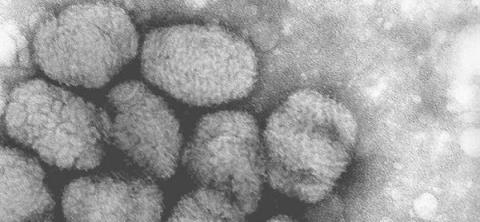
Thousands of years ago, the variola virus (smallpox virus) appeared and began to cause illness and death in many people with smallpox outbreaks occurring from time to time. Now, thanks to the success of vaccination, the last smallpox outbreak in the United States occurred in 1949. In 1980, the World Health Assembly declared smallpox to be eliminated and free of disease. No smallpox cases have occurred since that time.
content
- 1. What is smallpox?
- 2. How is smallpox spread?
- 3. What are the signs and symptoms of smallpox?
- 4. What is the difference between smallpox and chickenpox?
- 5. Smallpox vaccine:
1. What is smallpox?
This is a serious infectious disease caused by the variola virus. This virus is very contagious from one person to another. Affected individuals develop a characteristic fever and skin rash.
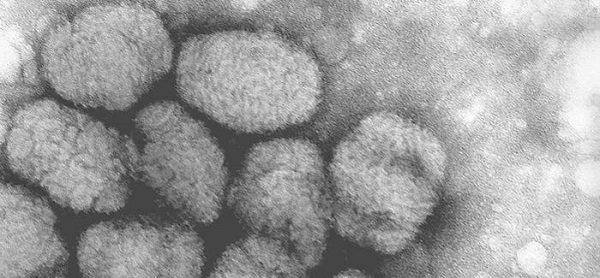
Smallpox is a serious infectious disease caused by the variola virus
Most people who get smallpox recover normally. However, about 3 out of 10 people who get the disease will die. Many people after an episode of smallpox have permanent scars over large areas of the body, especially the face. In some cases, they will go blind.
Thanks to the success of vaccination, smallpox was eradicated and there have been no cases of smallpox since 1977. The last natural outbreak of smallpox in the United States occurred in 1949.
2. How is smallpox spread?
The disease is mainly spread by direct person-to-person contact. The disease begins to spread when the first sores appear in the mouth and throat (the rash stage). The way it is spread is through droplets when they cough, sneeze, blow their nose or through their mouth.

The way smallpox is spread is through the mouth
In addition, it can also be spread through objects, when objects come into contact with scales and fluid from sores containing the virus in bedding or clothing, etc.
Smallpox can only be transmitted from person to person. Scientists have no evidence that smallpox can be spread from insects or animals.
3. What are the signs and symptoms of smallpox?
A person with smallpox goes through several stages as the disease progresses. Each stage has its own signs and symptoms.
3.1 Incubation period:
This phase can last from 7 to 19 days, with an average of 10 to 14 days.
People at this stage are not yet easily spread the virus to others.
The incubation period is the length of time the virus stays in a person's body before they show symptoms. During this stage, a person with the disease usually has no symptoms.
3.2 Beginning of the first symptoms:
This phase lasts from 2 to 4 days.
From this point on, the disease was able to spread. However, the disease is most contagious during the next two stages (early rash and rash with pustules and crusts).
The first symptoms include:
- High fever
- Headache, and body aches
- Nausea and vomiting
At this time, the patient often feels tired, exhausted and unable to function and work as usual.
3.3 Early stage of rash:
This phase lasts about 4 days.
This is the time when smallpox spreads most easily.
An initial rash looks like small red spots on the tongue and in the mouth. These blisters transform into sores, break open, and spread large amounts of virus into the mouth and throat. The patient now has a high fever.
Once the sores in the mouth start to break open, a rash will appear on the skin, starting on the face and spreading down the arms and legs, then to the hands and feet. Usually, it spreads to all parts of the body within 24 hours. When this rash appears, the fever begins to subside and the person may begin to feel better.
By day four, the skin ulcer is thick, cloudy, and often has a central indentation.
When the skin sores fill with fluid, the fever may rise again and the fever is high until scabs form on the sores.
3.4 Pustular and scaly rash:
This phase lasts about 10 days. This is also the time when the disease spreads easily.
The sores become raised pustules, often round and hard to the touch, resembling a pea under the skin.
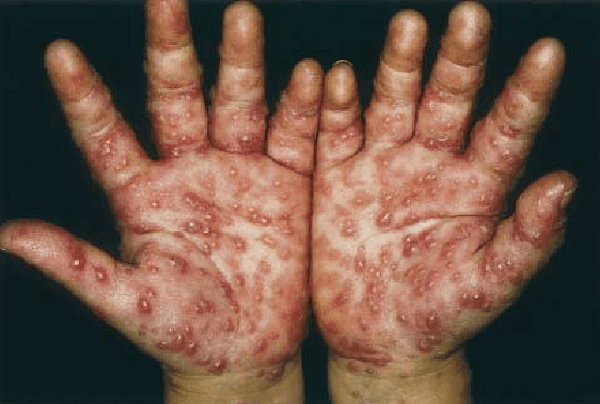
Pictures of pustular rash on hands
After about 5 days, the pustules begin to scab.
By the end of the second week after the rash appeared, most of the sores had scabbed over.
3.5 Scales fall off:
This phase lasts about 6 days.
At this point, the disease will no longer be contagious.
The scales begin to peel off and leave scars on the skin.
From three weeks after the rash appears, most of the scabs should fall off.
3.6 No more scales:
Since four weeks after the rash appeared, all the scabs have fallen off. The patient is no longer contagious.
4. What is the difference between smallpox and chickenpox?
Sometimes the names and symptoms of these two diseases are quite similar, so some people think that this is the same disease. In fact, these two diseases are different. Smallpox is caused by the variola virus, and chickenpox is caused by the Varicella Zoster virus (VZV). In addition, they differ in the following matters:
4.1 Time
Until now, chickenpox is a very common disease, especially in children. It happens about 4 million people get sick every year and more than 10,000 people have to go to the hospital because of the illness. There is now a chickenpox vaccine. However, the disease is still detected in children every year.
On the other hand, the incidence of smallpox is now close to zero.
4.2 Severity
The varicella virus causes chickenpox. If you have chickenpox, there will be itchy blisters on the body, after 5-7 days, the blisters will scab on their own and peel off without leaving a scar. In addition, the disease may have other symptoms such as fever and fatigue, body aches.
Smallpox is very different. It is caused by the variola virus. It also causes a rash, blisters, and fever, like chickenpox. But it's much more serious. Frequency suggests that about 3 out of 10 people who get the disease will die. Some people after a smallpox infection go blind or have permanent scars on their bodies. Experts say that in the 20th century, the disease killed more than 300 million people.
4.3 Skin manifestations
Chickenpox sores appear at different times in different areas. It is mainly in the center like the cephalothorax and then spreads to the arms and legs. Rarely on the palms or soles.
Meanwhile, smallpox sores appear all over the body at the same time. Mostly on the face, arms and legs, sometimes on the palms and soles.
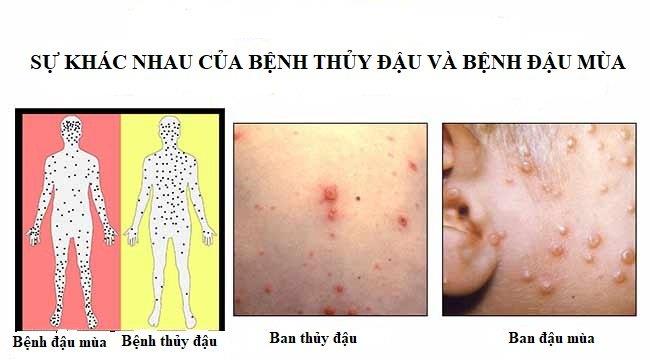
4.4 Vaccination against smallpox
Although chickenpox is a mild illness for most people, it can sometimes cause dangerous problems – especially in babies, adults, and people with weakened immune systems. That's why doctors recommend that all children get vaccinated – once at about 1 year of age, and again at 4-6 years of age. Older children and some adults who have never been vaccinated or have had chickenpox should also be vaccinated. The chickenpox vaccine is safe and up to 98% effective.
Seasonal disease has long had a vaccine. However, the smallpox vaccine is no longer recommended because the disease has been completely eradicated. If there is an outbreak of smallpox, health officials will use the smallpox vaccine to control it.
In addition, there are several antiviral medications that can help treat smallpox. Though. No smallpox treatment has been tested on people who have the disease and been shown to work.
5. Smallpox vaccine:
The smallpox vaccine helps protect people from smallpox by helping the body develop immunity to the variola virus. This vaccine is made from a virus called vaccinia, which is a poxvirus that resembles smallpox, but is less harmful.
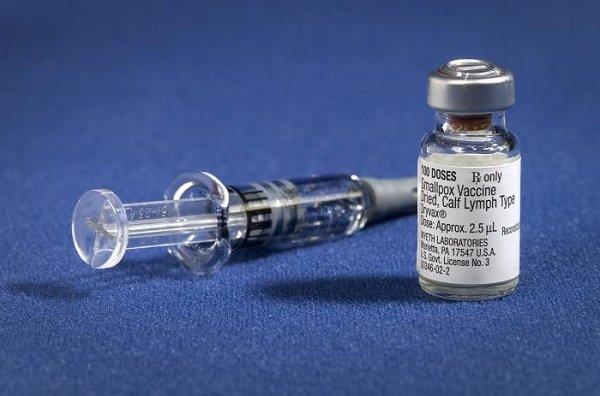
Smallpox vaccine is made from a virus called vaccinia
Smallpox vaccine is a live virus vaccine. Unlike many other viruses that contain dead or weakened viruses. Precautions should be taken when caring for the site on the arm to be vaccinated. This avoids spreading the virus in the vaccine.
For most people with healthy immune systems. Live virus vaccines are effective and safe. The exception will be mild symptoms such as rash, fever, headache and body aches.
Other live virus vaccines currently in use include measles, mumps, rubella, and chickenpox.
Smallpox vaccination can protect you from smallpox for about 3 to 5 years. After that time, the body's ability to protect will gradually decrease. If long-term protection is desired, multiple booster shots will be needed.
Historically, the vaccine has been effective in 95% of those vaccinated. Proven to prevent or significantly reduce infection. 1972 after the disease was completely eradicated in the United States.
See also: Chickenpox: What did you know?
Written by: Hoang Yen
Consulting : Doctor Nguyen Trung Nghia